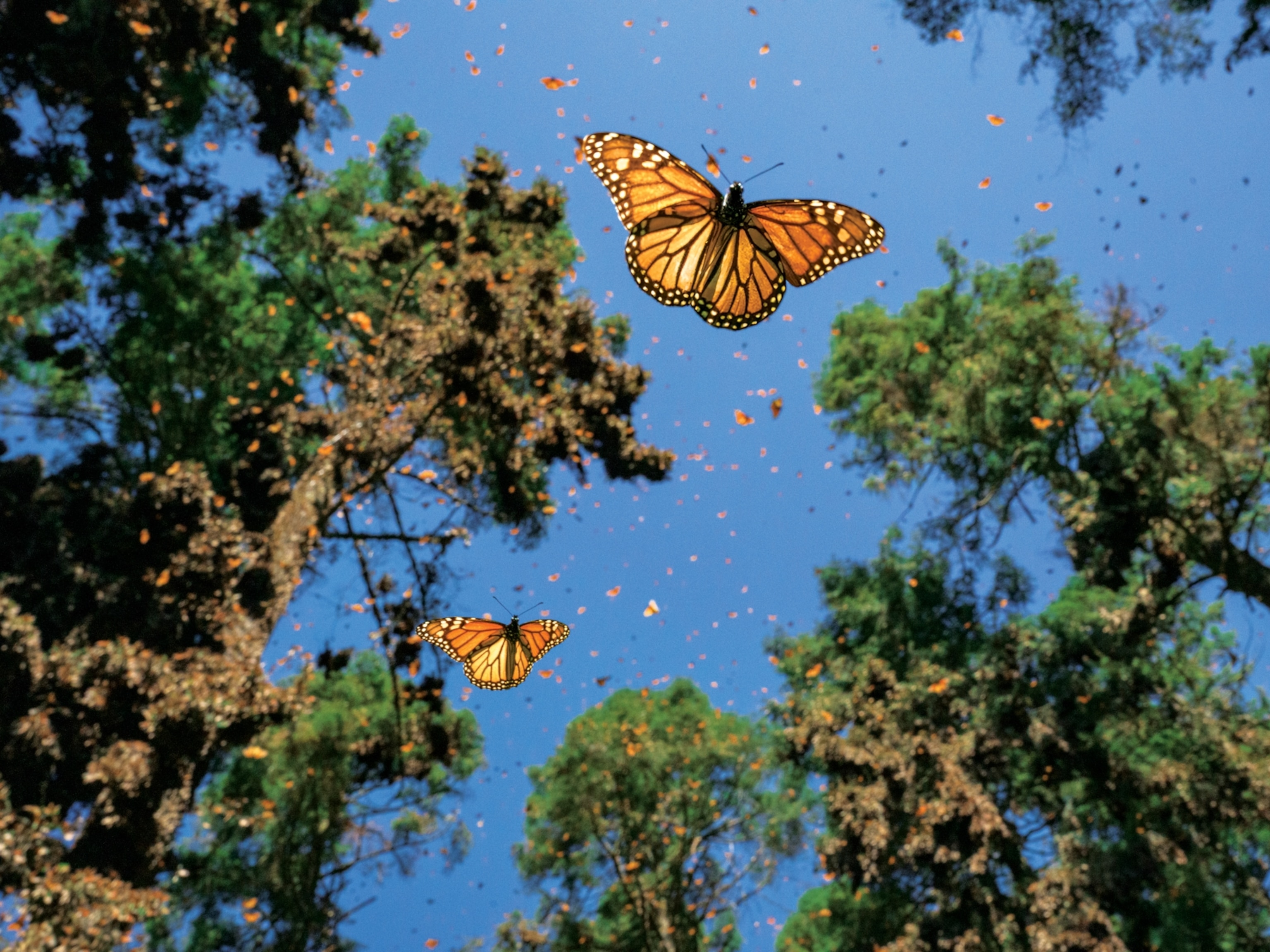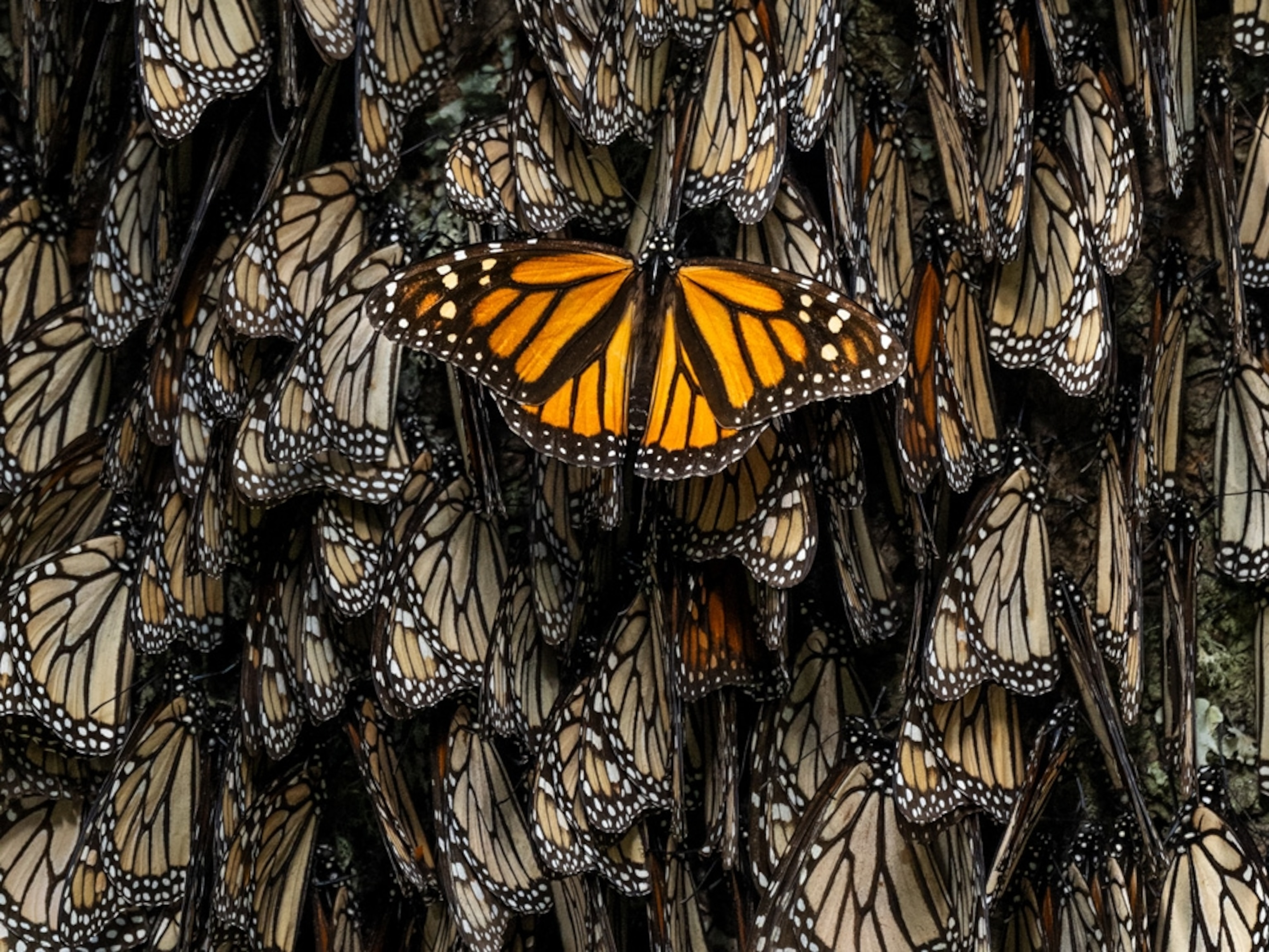Monarch Butterfly's Reign Threatened by Milkweed Decline
Use of herbicides in the U.S. is causing a decline in plants essential for the golden icon.
Fewer monarch butterflies are crossing North America to winter in Mexico, and the biggest culprit seems to be the disappearance of milkweed in the United States. The trend is particularly troubling because monarchs have long been considered both an indicator of our ecological health and a representative of pollinator populations.
Monarch butterflies travel up to 3,000 miles each fall to their wintering site in central Mexico, which was discovered by National Geographic grantee Fred A. Urquhart and his team in 1975. Once the butterflies arrive, a census by citizen scientists estimates how many have completed the trip.
In 2004, an estimated 550 million completed the winter migration, while in 2013 only 33 million arrived. Further, between 2012 and 2013, there was a 43.7 percent decrease in the area occupied by the butterflies in their winter sanctuaries. (See "Monarch Butterflies Hit New Low; 'Worrisome' Trend.")
Although illegal deforestation and severe weather have contributed to the decline, research done by the World Wildlife Fund Mexico and the Monarch Butterfly Biosphere Reserve suggests that the overwhelming concern is U.S. farms' large-scale use of herbicides that destroy milkweed. Further studies done by D. T. Tyler Flockhart, of the University of Guelph in Ontario, and his colleagues compared the relative effect of each threat and determined that loss of milkweed had the greatest impact on recent monarch declines.
Milkweed is the only plant on which monarch butterflies will lay their eggs, and it is the primary food source for monarch caterpillars. Despite its necessity to the species, the plant decreased 21 percent in the United States between 1995 and 2013. Scientists, conservationists, and butterfly enthusiasts are encouraging people to grow the plant in their own yards and gardens.
The butterflies' life span is so short that those making the next migration to Mexico will be the great-grandchildren of the previous migrators. For this winged orange icon, survival is a group effort.





